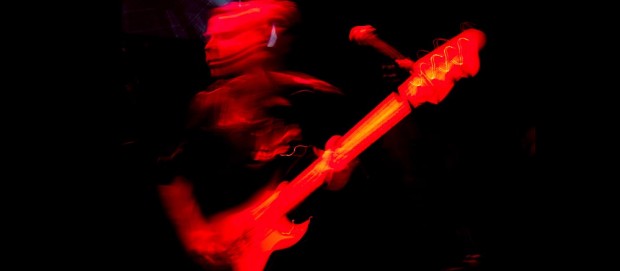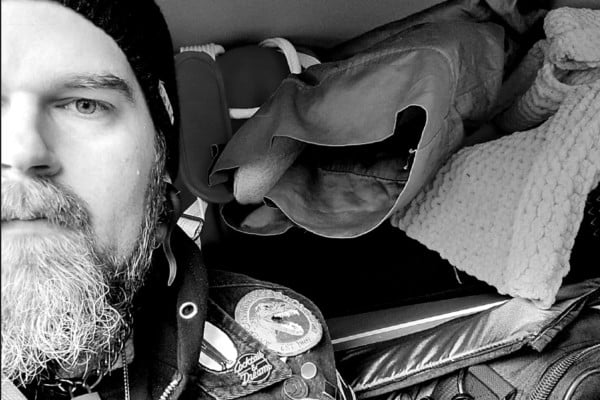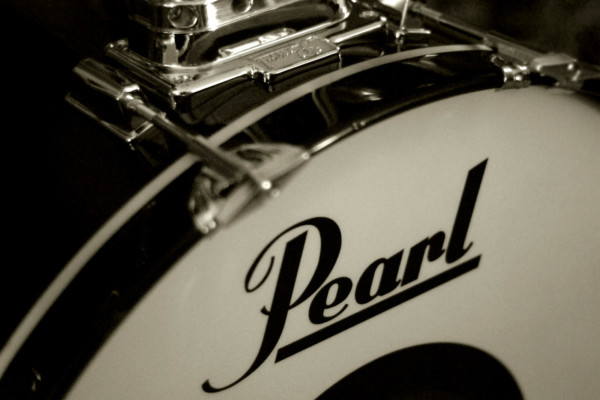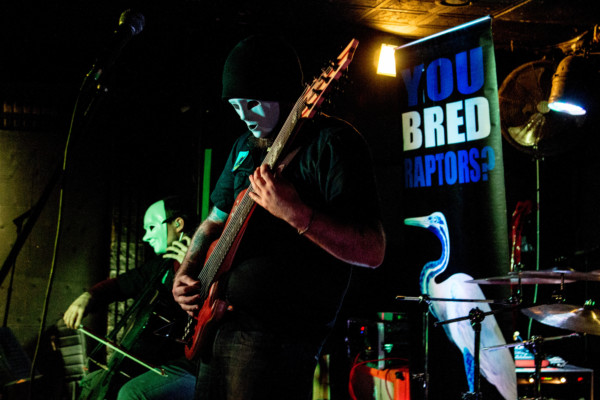Rhythm Bass? What To Do When the Rhythm Guitar is Missing

Q: I play bass in a rock/metal band with only one guitarist, who does plenty of guitar solos. I was wondering if you had suggestions on how to fill up the space, so to speak, to overcome the lack of rhythm guitar. Any insight you might have would be greatly appreciated!
A: Although it’s been a while since I played much metal (and admittedly, I was a drummer back then), I do know that the role of the bassist generally is in line with the rhythm guitarist.
Unless much has changed from my days of Slayer, Sepultura and Napalm Death (you wouldn’t believe how much of a metal head I was back in the day), the bassist usually was almost a carbon copy of the rhythm guitarist, minus the power chords, that is.
So my advice would be to take whatever the guitarist was doing when he was playing rhythm (on the original recording, for example) and rock that: rhythm and roots.
In metal, it’s really about the roots of the chord and the rhythm is king! Unless, of course, we’re talking Dragon Force-style metal here but, when I personally hear the word metal, I’m thinking Cliff Burton (who was also fantastically melodic at times), Rex Brown, Steve Harris and Tom Araya.
Rhythm is king! Lock that done and play hard, my friend!
Readers, what’s your routine in these situations? Tell us about it in the comments.
Photo by Gonzak.
Have a question for Damian Erskine? Send it to [email protected]. Check out Damian’s instructional books, Right Hand Drive and The Improviser’s Path.




Lots of diads also help.
pulling out ther guitar players lead works,too.
diads and power chords and walking.
I think the idea that rhythm is key is a good point, but the idea that it’s all about the root of a chord isn’t necessarily true, Rage Against the Machine being a good example. I always think with just one guitarist it’s nice to leave some space as well, and let the drums and either vocals or lead come to the forefront, before kicking in with a bass lick.
I play in a twin lead metal band, the guitarists are so accomplished that we have overlapping solo’s and both play rhythm as well, so you’d think that all I had to do was keep the pocket, but we’re so harmonic and melodic that I also play carbon copy of the rhythm guitar AND keep the timing, it gets very busy at times but I like to think I can do it all, never had a complaint yet ;).
I play in a metal band with only guitarist. He doesn’t solo too often. But when he does, I kick in some distortion via my Zoom B21.u pedal. I also play 2 or 3 note chords relatively often. Pedaling while letting the notes ring is also good, if applicable.
Here’s my take on this.. Write your bassline as separate as the rhythm guitar as you can. Lock in with him to create that solid feel but if all you do is double his riff, when he hits a solo spot the song will sound empty. I play in a metal band that used to have 2 guitar players..now we only have one and although he is more than capable of doing everything, I had to rewrite many bassline after the reformat. I’m not saying to fly off lead style on the bass but keep it moving. Think Rex Brown. He’s a perfect one-guitar band bass player example. I also often use the Steve Harris/Dave Ellefson approach of creating colors and movement under the solos instead of riffing away. Having only one guitar players opens up an ocean of possibilities for a bass player and I prefer it. It gives us an incredible amount of control over how a song will be perceived/felt. I love it!
Another thing you can do is tell your drummer to play open hat in those parts where you feel a second guitar is lacking. Hi-Hats share lots of the same guitar frequencies. For the times when its better to play the rhythm guitar-style, you won’t believe how much this fills everything up!
I think you’re right in principle, but again it depends on the style of music and what you want to put across. Personally in my thrash metal band I do a bit of both. I double the riff when it is called for, like when I think the sounds should be “thicker” and air tight. That’s the nature and power of pure thrash, the razor tightness and sharpness at a high speed is what it’s about. At the same time I add runs, slides, accents and such when it calls for it, especially when the drums have a distinct part they are doing. In my stoner rock project, I tend to be a lot more all over the place cause there’s room for it. A lot more open chords and such on the part of the guitars, an more fills on the part of the drummer. Whatever the song and style of music calls for is what I do at that given point.
Hit the octave interval, or a fifth.
I was dealing with this exact thing at rehearsal last night. I’ll normally kick in a little chorus to thicken up my tone, and then I tend to play octaves – it seems to get me more up into the frequency range a rhythm guitar would ordinarily be taking up (if we had one). It fills things out much better than just plugging along on the root note.
LEMMY.
I agree with Kurt. On a straight ahead rock groove (ac/dc) I drop octaves on 2 and 4 beats or mimic the snare. Or add some simple fills between chord changes to keep the groove moving. Some overdrive fattens things up nice but I would avoid trying power chords. Never sacrifice the bottom end for the sake of coppin a g%$#*r player part!
At least u didn’t have to worry bout that in the “Full Tilt” band… Those were the Daze!..LOL
Simple, overdrive or distortion of a non digital processor, or something like a GT-10b. From sub octavers, to distortions, to harmonizers. You can be an artist or an average player, and find a happy median to fill in the low and low mids that the guitar player is potentially leaving out.
Fulltone makes a great pedal, Boss great processors, and Compression is also key.
If I ever get back into a hard rock trio, I’m going to go with an 8 string and biamp the lows into a bass amp, and mids/highs into a guitar amp with a little dirt.
Much like kings x… Love it
I’m going to do what I did in the years ago when I was in a 3-pc…a little distortion.
I am working on playing my bass with all hammer-ons with my left hand and chords on a Korg Triton with my right hand. It fills in the hole nicely.
Lol. So I should play a powerchord? Don’t get his answer.
Don’t be afraid of power chords. They sound fine on bass if played right. When my old guitarist left the band, we kept playing gigs, I just started playing a couple more notes with each chord change
Geddy Lee, John Entwistle, Jack Bruce, and others. Having one guitarist can severely restrict what you do or with a little prep and openess towards the song it can open a world of opportunities. Its pretty hard to substitute bass parts for what were once a rhythm guitarist, you may have to rearrange the whole song. The responsiblity falls on all 3 not just the bassist.
I happen to play the hard rock/ metal spectrum, and I find that some chords actually work well to fill up space, there’s no rule saying that a bassist can’t play chords :D
Slip into triads, 1st, 5th, and 10th with the 8th thrown in occasionally, with muted strumming on the other strings.
I only have one guitar player in my band and I happen to use powerchords and distorsion A LOT.
Do just what feels right for your music. Experiment and open your ears. :p